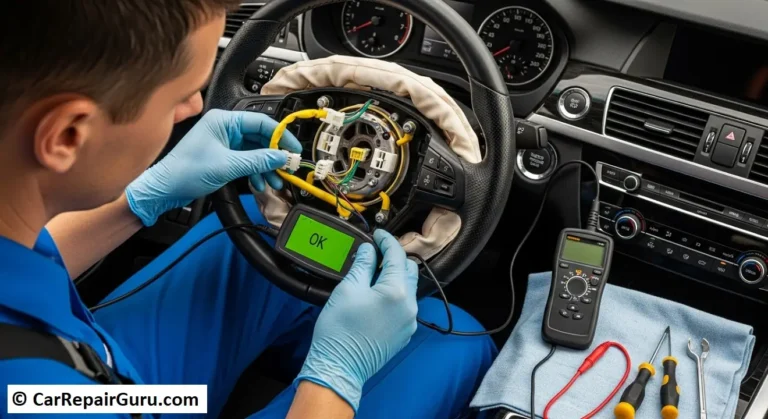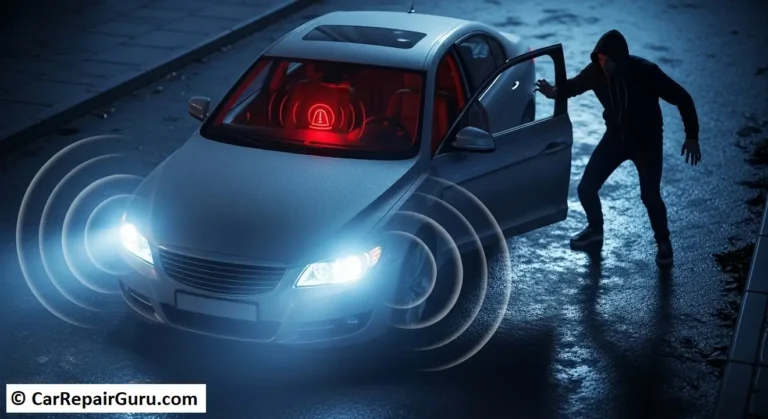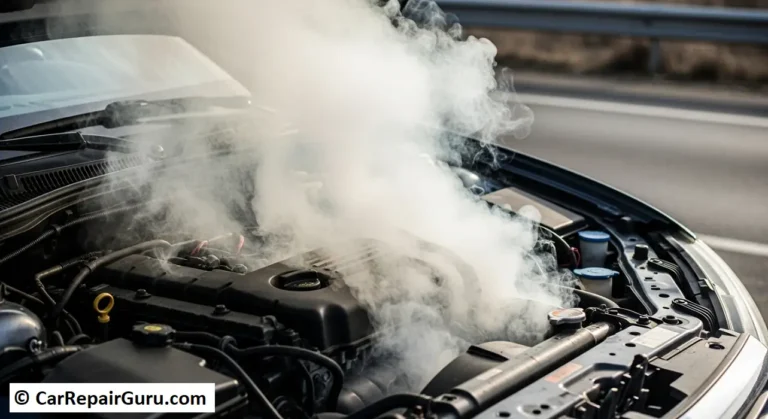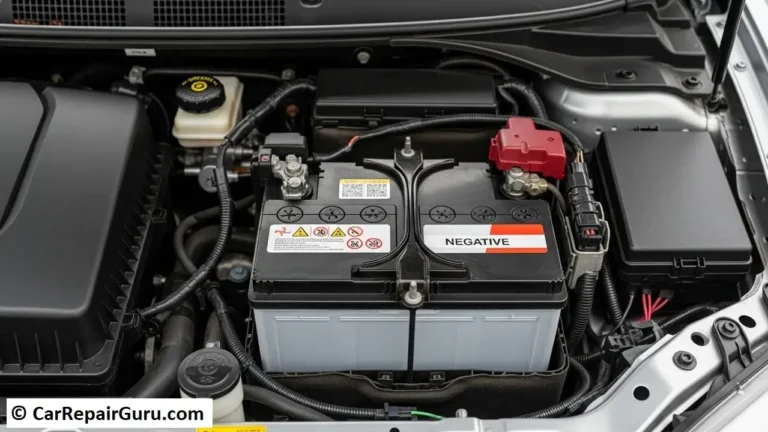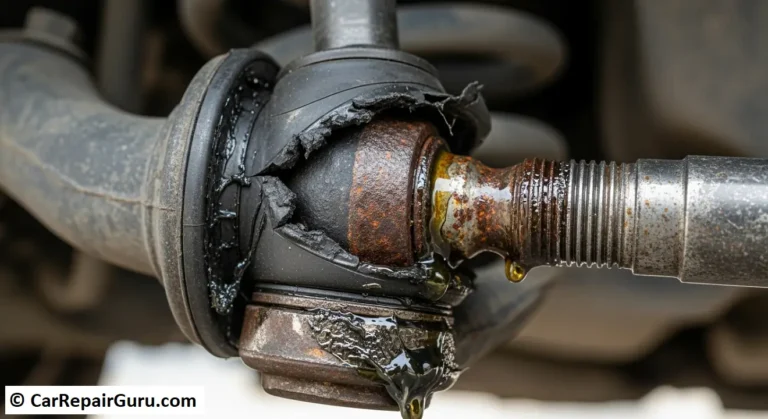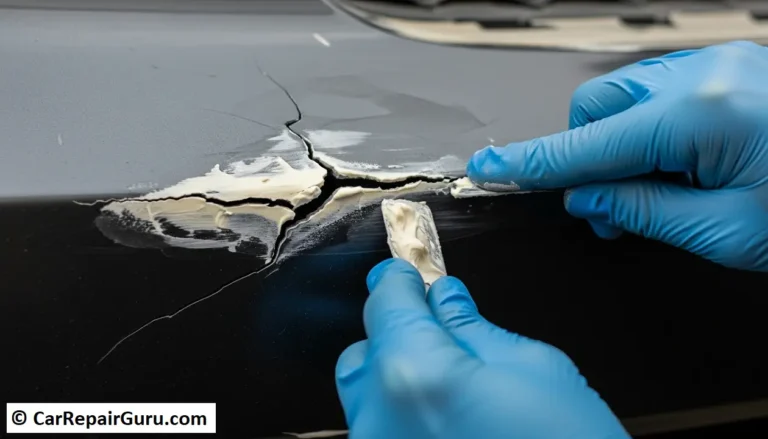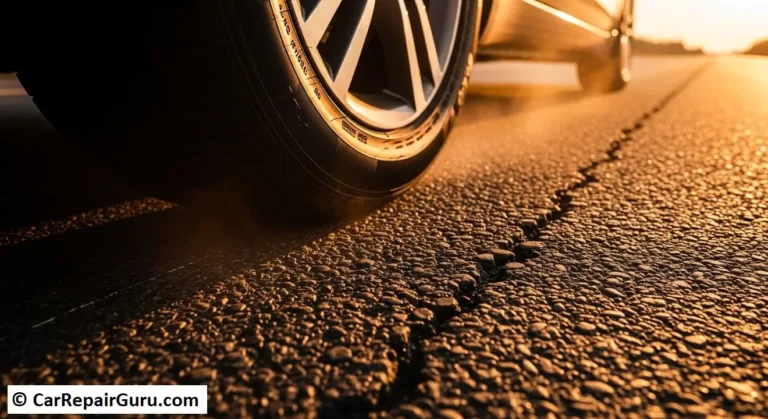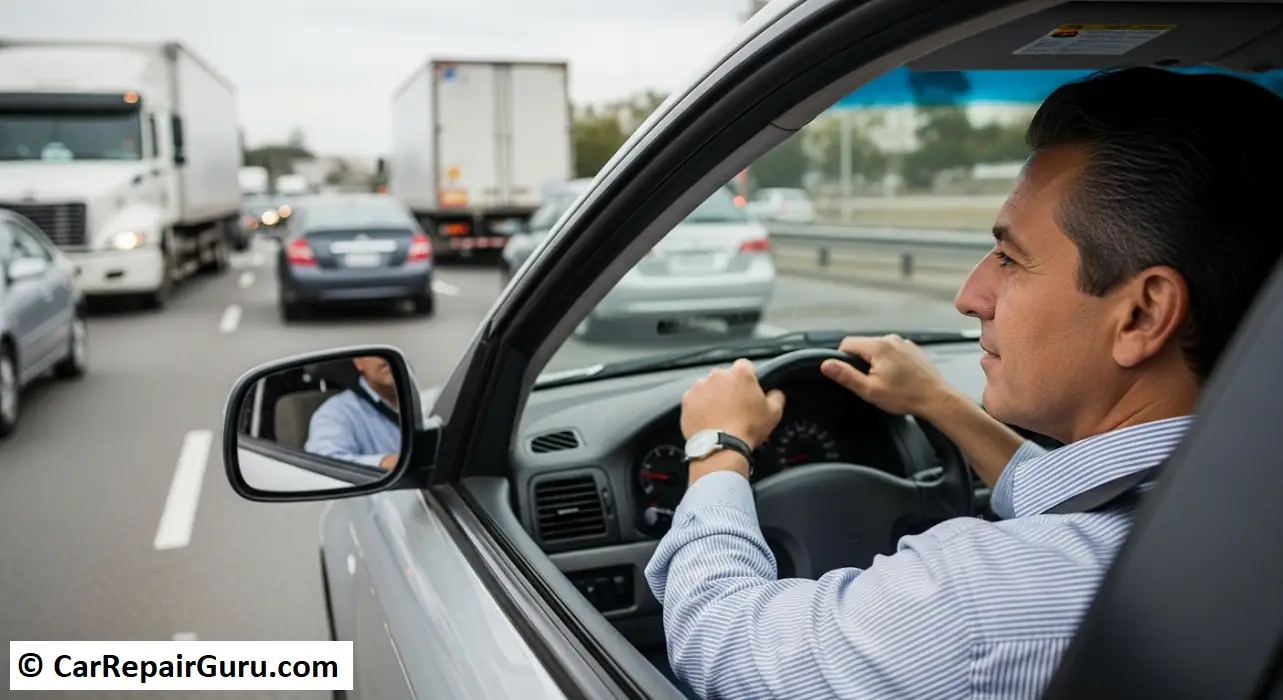
Imagine you’re cruising down the highway, music on, windows cracked—and suddenly, the car in front slams on the brakes. Would you be ready? That’s where defensive driving comes in.
Defensive driving is more than just following traffic laws—it’s about anticipating potential hazards before they happen. It’s a mindset that helps you stay alert, make smarter decisions, and react calmly to the unexpected. By driving defensively, you’re not only protecting yourself and others on the road, but you’re also preserving your vehicle from unnecessary wear and tear.
Whether you’re a seasoned driver or just starting out, mastering this skill can make a real difference. Safe driving habits like maintaining distance, scanning the road ahead, and avoiding distractions don’t just prevent accidents—they also reduce the strain on your brakes, tires, and engine.
In short, defensive driving is one of the smartest ways to stay safe and keep your car running like new.
Core Defensive Driving Techniques
Driving safely isn’t just about knowing the rules of the road—it’s about anticipating what might go wrong and staying prepared. That’s the essence of defensive driving. It’s a skillset every driver can develop to reduce accidents, stay calm under pressure, and keep their car in better shape for longer. Let’s explore the core techniques that define this proactive approach to driving.
Maintain a Safe Following Distance
One of the simplest yet most effective defensive driving techniques is keeping a safe distance between your vehicle and the one ahead. This gives you ample time to react if the car in front brakes suddenly. The general rule is the two-second rule under normal conditions, and even more in bad weather. A safe following distance helps prevent rear-end collisions and reduces the wear on your brake system, which is a win for both safety and car maintenance.
Stay Alert and Scan the Road Ahead
Defensive drivers constantly scan their surroundings. That means checking your mirrors frequently, watching for pedestrians, and keeping an eye out for brake lights several cars ahead—not just the one directly in front of you. This kind of awareness gives you more time to make smart, proactive driving decisions, which can mean the difference between a near-miss and a major accident. It also prevents hard braking and abrupt swerving, protecting your suspension and tires from unnecessary damage.
Eliminate Distractions
Distractions like texting, adjusting the radio, or even eating while driving can take your attention off the road at the worst moment. Practicing safety-conscious driving behavior means keeping both hands on the wheel and your eyes on the road. Every second counts. The more focused you are, the more time you have to avoid accidents—and the less likely you are to damage your vehicle in the process.
Adjust Your Speed to the Conditions
Speed limits are meant for ideal conditions, not rain, fog, or heavy traffic. Driving defensively means slowing down when visibility drops or roads are slick. Adapting your speed helps maintain control, improves fuel efficiency, and protects key components like your engine and brakes from strain. Sudden stops and sharp maneuvers aren’t just dangerous—they’re also costly over time.
Use Your Mirrors and Signal Clearly
Checking your mirrors regularly and signaling well in advance of lane changes or turns is a hallmark of defensive driving. It helps you avoid blind spot accidents and keeps traffic flowing smoothly. By communicating clearly with other drivers, you reduce the risk of sudden movements that can damage your steering system or tires.
Be Extra Cautious at Intersections
Intersections are high-risk zones where defensive driving really pays off. Look both ways—even if the light is green—and watch for red-light runners or fast turns. Slowing down and approaching intersections with caution can prevent serious collisions, which protects both your health and your car’s structural integrity.
By practicing these defensive driving techniques every day, you’re not just becoming a safer driver—you’re also investing in your car’s long-term health. It’s a smart, responsible way to drive that benefits you, your passengers, and your vehicle.
Benefits of Defensive Driving
Defensive driving isn’t just about avoiding collisions—it’s about making every drive smoother, smarter, and more cost-effective. While the primary goal is safety, the benefits extend well beyond preventing accidents. From saving money on repairs to lowering insurance premiums, adopting defensive driving habits can have a long-term positive impact on both your life and your car.
Fewer Accidents, Less Damage
The most obvious benefit of defensive driving is a reduced risk of being involved in an accident. By staying alert, maintaining safe distances, and anticipating the actions of others, you drastically lower your chances of crashing. Fewer accidents mean fewer trips to the repair shop, no insurance claims to file, and no dealing with costly car body damage or alignment issues.
Lower Insurance Costs
Many insurance companies recognize the value of defensive driving and reward policyholders who take certified courses. Completing a defensive driving course can lead to insurance discounts—sometimes up to 10%—which adds up over time. Safe drivers are also less likely to receive traffic tickets, keeping insurance rates stable or even lowering them further.
Reduced Wear and Tear
When you drive defensively, you naturally avoid aggressive behaviors like speeding, hard braking, and rapid lane changes. These habits may seem harmless in the moment, but they place serious strain on your vehicle over time. Smooth driving conserves brake pads, extends tire life, and prevents unnecessary wear on your suspension system and engine components. It’s a simple way to protect your investment and avoid costly maintenance.
Better Fuel Efficiency
One of the lesser-known benefits of defensive driving is improved fuel economy. By accelerating gradually, avoiding unnecessary stops, and maintaining consistent speeds, your car uses fuel more efficiently. This not only saves money at the pump but also reduces carbon emissions—a win for your wallet and the environment.
Confidence and Peace of Mind
Driving can be stressful, especially in busy traffic or during bad weather. But when you drive with a defensive mindset, you feel more in control. That confidence can make every commute or road trip less tiring and more enjoyable. You’re prepared for surprises, which means less anxiety and more peace of mind.
In the end, defensive driving pays off in safety, savings, and confidence. It’s not just a smart technique—it’s a better way to drive for yourself, your passengers, and your vehicle.
Defensive Driving and Car Maintenance
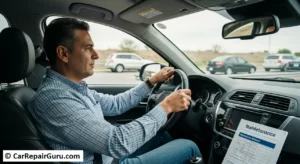
Most drivers think of defensive driving as a way to stay safe on the road—but did you know it also plays a huge role in maintaining your car’s health? The way you drive affects nearly every part of your vehicle, from the tires to the transmission. When you drive defensively, you’re not only protecting yourself from accidents—you’re also extending the life of your car and reducing maintenance costs over time.
Less Stress on Your Brakes
Hard, sudden braking wears out brake pads and rotors much faster than gradual stopping. Defensive drivers anticipate stops and apply the brakes smoothly, which reduces heat buildup and stress on the entire brake system. This simple habit can save you from costly repairs and extend the lifespan of your pads and discs.
Extended Tire Life
Tires take a beating during aggressive driving—especially from quick starts, sharp turns, and hard stops. By driving at steady speeds and avoiding unnecessary lane changes, you reduce uneven tire wear and improve grip. Regular tire maintenance combined with defensive driving can significantly increase your tire longevity and keep your car safer on the road.
Protection for Suspension and Steering
Your car’s suspension and steering components are designed to absorb impact, but they can wear down quickly if you’re constantly hitting potholes or curbs because of reckless maneuvers. Defensive drivers stay alert and avoid road hazards before they become a problem. That careful attention helps protect your shocks, struts, and alignment—leading to smoother rides and fewer trips to the mechanic.
Better Engine Performance
Smooth acceleration and consistent speeds help the engine perform more efficiently. Rapid acceleration, on the other hand, consumes more fuel and places stress on the engine and transmission. Driving defensively—especially during traffic or in stop-and-go conditions—helps maintain better fuel economy and reduces engine wear.
Lower Overall Maintenance Costs
All these benefits add up to one big win: lower long-term maintenance costs. When you drive with care and intention, your car experiences less wear and tear. That means fewer breakdowns, fewer repairs, and more time between service appointments.
Defensive driving isn’t just about safety—it’s smart car care. If you want your vehicle to last longer, perform better, and cost less to maintain, adopting a defensive driving mindset is one of the best decisions you can make behind the wheel.
Why Take a Defensive Driving Course?
Taking a defensive driving course isn’t just for new drivers or those trying to dismiss a traffic ticket—it’s a valuable investment for anyone who wants to become a safer, smarter, and more cost-conscious driver. These courses are designed to teach you how to anticipate road hazards, improve your reaction times, and develop habits that protect both you and your vehicle.
Learn Life-Saving Techniques
A defensive driving course goes beyond the basics. It trains you to handle real-world driving challenges like sudden stops, aggressive drivers, and dangerous weather conditions. You’ll learn how to stay calm under pressure, make quick decisions, and avoid situations that often lead to accidents. These techniques can literally save lives.
Save Money on Insurance
Many insurance providers offer discounts to drivers who complete certified defensive driving programs. Depending on your insurer and state, you could save up to 10% on your premium. That discount adds up fast—especially when combined with the lower likelihood of being involved in a crash.
Improve Vehicle Longevity
By practicing what you learn—like smoother braking, steady acceleration, and proactive decision-making—you reduce the wear and tear on critical systems such as your brakes, tires, and engine. That means fewer repair bills and a longer lifespan for your car.
Meet Legal or Workplace Requirements
Some states require defensive driving courses after traffic violations, while certain employers mandate them for fleet drivers. Completing one can help you keep your license in good standing or stay compliant with job policies.
Whether you’re looking to sharpen your skills, save money, or simply feel more confident on the road, a defensive driving course offers practical, long-lasting benefits. It’s a small step that can make a big difference—for your safety, your wallet, and your car.
Defensive Driving for Different Weather Conditions
Weather can change quickly—and so should your driving. One of the core principles of defensive driving is adaptability. Different weather conditions require different strategies to keep you safe and protect your car from unnecessary wear. Whether it’s rain, snow, fog, or heat, knowing how to adjust your driving can reduce risks and keep your vehicle in top shape.
Driving in Rain
Wet roads reduce tire traction and increase stopping distances. Defensive drivers respond by slowing down, increasing following distance, and avoiding sudden movements. Hydroplaning is a serious risk, especially at higher speeds or with worn tires, so checking tire tread depth and pressure before a storm is essential. Use headlights for visibility and avoid large puddles, which can hide potholes that damage your suspension.
Winter and Icy Conditions
Snow and ice dramatically reduce control, making defensive driving techniques critical. Slow, deliberate steering, braking, and accelerating help prevent skids. Always keep a greater distance from other vehicles and brake gently to avoid locking up the wheels. Check that your brake system, battery, and coolant levels are winter-ready, and switch to winter tires if possible for better grip.
Fog and Low Visibility
In foggy conditions, visibility drops—and so should your speed. Use low beams, not high beams, and keep an eye on road markings. Defensive drivers stay alert, avoid passing, and focus on being seen and seeing clearly. Keeping your windshield wipers and defroster in good working order is key to maintaining visibility.
Hot and Dry Weather
While sunny skies might seem ideal, high heat brings its own challenges. Defensive drivers check coolant, oil levels, and tire pressure regularly to prevent overheating or blowouts. Long periods of stop-and-go traffic in summer can overheat brakes and engines. Reducing aggressive driving in hot conditions helps keep your car running cool and your brake pads from excessive wear.
Be Prepared, Not Surprised
The weather can be unpredictable, but your response doesn’t have to be. Defensive driving in all weather conditions starts with preparation—knowing your car, understanding the road, and being ready to adapt. These small changes not only keep you safe but also extend the life of your vehicle’s key systems.
In every climate, the rule is the same: adjust your driving to the environment, not the other way around.
How Defensive Driving Affects Long-Term Vehicle Costs
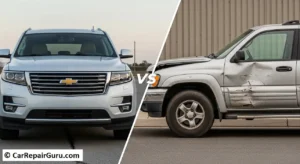
Most drivers think of defensive driving in terms of safety—and rightfully so. But there’s another major benefit that often goes overlooked: saving money over time. The way you drive has a direct impact on your vehicle’s condition, which in turn affects how much you’ll spend on repairs, maintenance, insurance, and even fuel. Practicing defensive driving isn’t just smart for your health—it’s a financial win too.
Fewer Repairs and Replacements
Aggressive driving—like sudden braking, rapid acceleration, and sharp cornering—puts extra stress on your car’s systems. Over time, that leads to faster wear on your brakes, suspension, tires, and transmission. Defensive drivers avoid these habits by maintaining steady speeds and anticipating road conditions. The result? Fewer breakdowns and less need for expensive repairs or part replacements.
Extended Lifespan of Key Components
Driving smoothly and responsibly helps extend the life of critical parts. For example, easing into stops and allowing for longer braking distances reduces wear on brake pads and rotors. Similarly, avoiding potholes and rough handling protects the steering system and wheel alignment, reducing the need for frequent adjustments. These habits pay off with a more reliable, longer-lasting vehicle.
Improved Fuel Efficiency
Fuel costs can add up quickly, especially with stop-and-go traffic or long commutes. Defensive driving helps you get more out of every gallon. Gradual acceleration, maintaining consistent speeds, and avoiding unnecessary idling all contribute to better fuel economy. Over the course of a year, this can mean significant savings—especially with rising fuel prices.
Lower Insurance Premiums
Safe drivers tend to get into fewer accidents—and insurance companies reward that. By maintaining a clean driving record and possibly completing a defensive driving course, you may qualify for lower premiums or safe driver discounts. That’s money in your pocket year after year.
Less Frequent Maintenance
When your car isn’t being pushed to its limits every day, routine maintenance becomes less urgent. Oil changes, tire rotations, and brake inspections are still essential—but the intervals between them can stretch out when you drive conservatively. That means fewer trips to the mechanic and more time enjoying a smooth ride.
In the long run, defensive driving is one of the most cost-effective habits you can adopt. It saves money, reduces stress, and keeps your vehicle performing at its best—mile after mile.
Conclusion
Defensive driving isn’t just a skill—it’s a mindset that protects your life, your passengers, and your vehicle. From reducing accidents to lowering maintenance costs and insurance premiums, the benefits are real and long-lasting. By practicing defensive driving daily, you become a more confident, responsible, and financially savvy driver.
Whether you’re navigating a rainy highway or cruising on a sunny day, staying alert, avoiding distractions, and anticipating hazards can make all the difference. And let’s not forget—your car will thank you with fewer repairs, better performance, and longer life.
Ready to take your driving to the next level? Start applying defensive driving techniques today, or consider enrolling in a defensive driving course to sharpen your skills even further. It’s a smart move for your safety—and your wallet.
Drive smart. Stay safe. Protect your car.
Because every mile counts when you drive defensively.
FAQ
1. What is defensive driving?
Defensive driving is a driving technique focused on anticipating and avoiding potential hazards on the road. It involves staying alert, maintaining safe distances, obeying traffic laws, and being prepared for the unexpected actions of other drivers.
2. How does defensive driving save money?
By reducing the risk of accidents, aggressive driving behaviors, and wear on key vehicle components like brakes, tires, and suspension, defensive driving helps cut down on repair costs, fuel expenses, and insurance premiums.
3. Can taking a defensive driving course lower my insurance?
Yes! Many insurance companies offer discounts to drivers who complete certified defensive driving courses. It can reduce your premium by up to 10%, depending on your provider and location.
4. Is defensive driving only for new or young drivers?
Not at all. Defensive driving benefits all drivers—regardless of age or experience. It helps seasoned drivers refresh their skills and adopt safer, more efficient driving habits.
5. Does defensive driving really extend the life of my car?
Absolutely. Smooth acceleration, gentle braking, and cautious driving reduce stress on the engine, transmission, brakes, and other systems, helping your car run better and last longer.
6. What are some examples of defensive driving?
Examples include scanning your surroundings regularly, keeping a safe following distance, using turn signals early, obeying speed limits, and adjusting driving habits based on weather or road conditions.
7. How does defensive driving help in bad weather?
In rain, fog, snow, or heat, defensive driving helps you adjust your speed, increase following distance, and stay in control. These actions reduce the chance of accidents and help protect your vehicle from weather-related damage.
8. Where can I take a defensive driving course?
You can find certified courses through local driving schools, online programs, or your state’s Department of Motor Vehicles (DMV). Many are affordable and can be completed in just a few hours.
